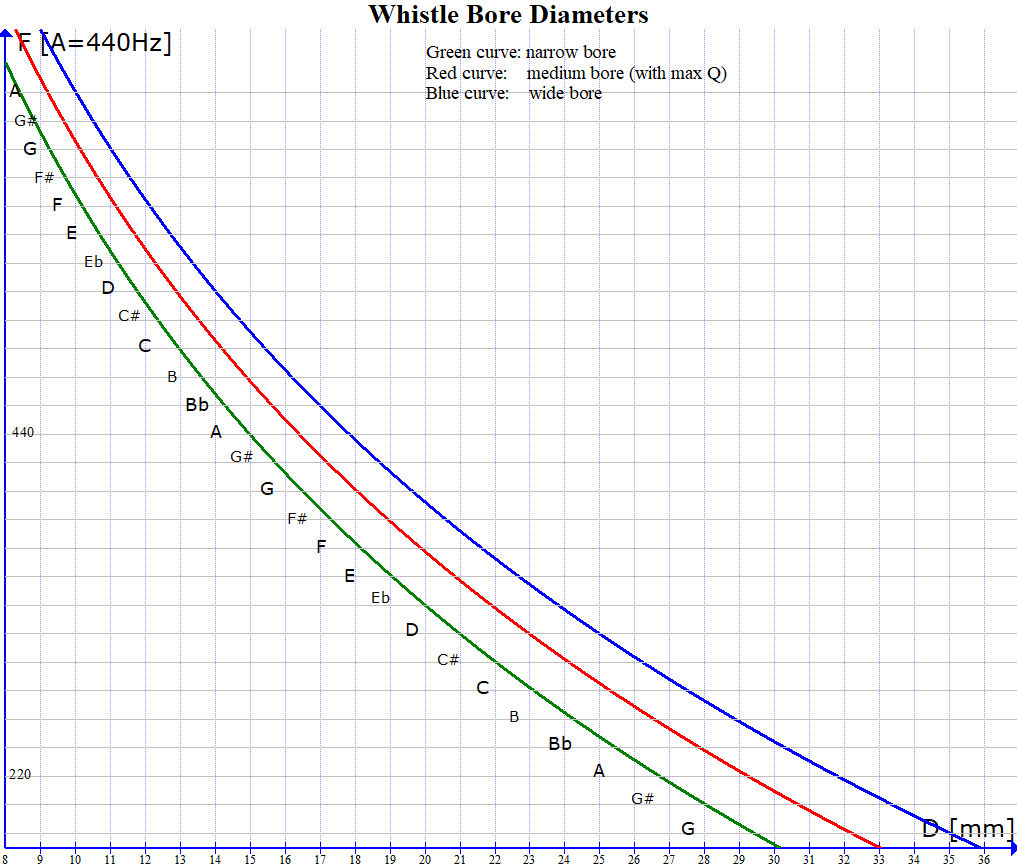Searching For The Optimal Whistle Bore
Here is a graph showing whistle keys by bore diameters.
The red curve plots the points of theoretical maximal Q for a whistle of a given bore diameter (Q is a measurement for the "quality" of resonance). The green curve left is an example for a narrow bore range of whistles, the blue curve to the right a wider bore range. Obviously one can choose narrower or wider bores for playable whistles. The curves should just give an indication for useful ranges.
The tone of a wider bore whistle generally has more pronounced fundamental frequencies in relation to the higher harmonics present, compared to a narrower bore whistle, which will have slightly more pronounced higher harmonics. At least that is the general rule, but much depends on the voicing of the whistle, and the design of the wind way and window and tone holes. So a wider bore whistle may sound a bit fuller, more fluty, a narrower bore whistle may sound a bit thinner, crisp and sharp. But words inevitably fail to describe these complexities of tone.
Another important factor for choosing a whistle's bore size is that a wider bore whistle of the same key usually plays louder, and a narrower bore whistle of same key quieter than a "standard" medium bore whistle, because of a wider or narrower wind way and window.
See also this topic on the Chif&Fipple whistle forum: In Search of the Optimum Bore

Formula:
red curve:
F(D) = 12642 * D^(-14.4/12) = 12642 * D^(-6/5)
or D = 2619 * F^(-12/14.4) = 2619 * F^(-5/6)
corresponding to a scaling factor of doubling the diameter every 14.4 semitones